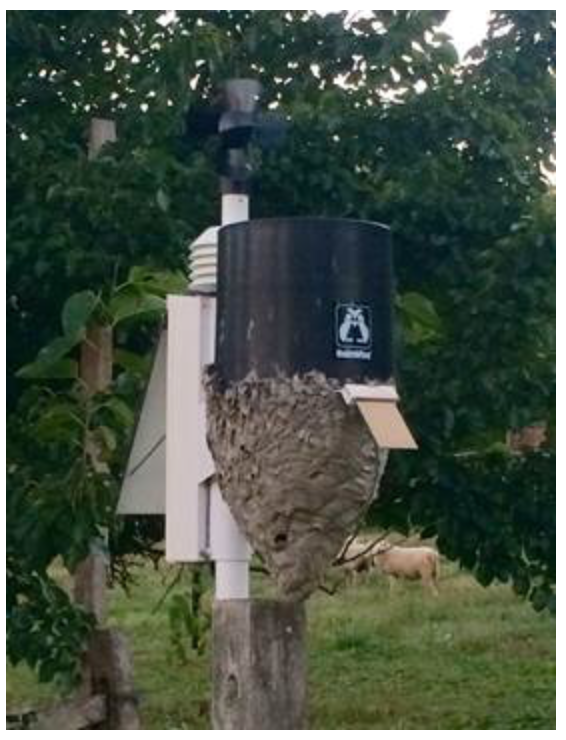As the 2017 field season comes to a close, it’s time to give your stations some TLC.
I must emphasize the importance of keeping stations clean and in good working condition. Even small errors in sensor measurements like rainfall and temperature can lead to larger NEWA model miscalculations over time.
Here are some useful preventive maintenance tips. You can also download a maintenance checklist.
- Clean the rain gauge tipping bucket. Leaves, insects and other debris can clog the drain, causing an error in rainfall measurements. Do this not only in the fall but again in the spring and at least twice during each growing season. To learn more about tipping bucket maintenance, watch this YouTube video (https://www.youtube.com/watch?v=_7Q3xL2vvPg&feature=youtu.be)

Weather station “maintenance.” Photo credit Mary Concklin, University of Connecticut.
- Clean the solar radiation sensor. The diffuser can be cleaned with a damp cloth. If the diffuser is yellowed, contact Rainwise support for technical assistance.
- Check the anemometer and weather vane. Both the anemometer (spinning fan) and weather vane should also move freely in all directions. Set the weather vane to zero on due North.
- Check the leaf wetness sensor for damage. Examine the plastic board and electrodes for corrosion, cracking or weathering damage. Also look at station leaf wetness data on NEWA. If wet periods seem to be missing or incorrect based on your field observations or experience, contact Rainwise support for technical assistance.
- Check the RH sensor. Verify that RH measurements are accurate by looking at RH values on dewy or rainy mornings using the NEWA website. If values are low or missing, the temperature/RH sensor may need to be replaced. Contact Rainwise support for technical assistance
Rainwise recommends a two-year calibration cycle for their weather station. As of October 2017, NEWA recommends that you contact Rainwise support at (207) 801-4039 or 1-800-762-5723 before dismantling and sending your station to the factory for repairs. Recent national weather events have caused a backlog of station service requests. This will minimize station downtime.
For more information on station maintenance and troubleshooting visit the NEWA Weather Station Guidelines page or download the NEWA Maintenance and Troubleshooting Guide.